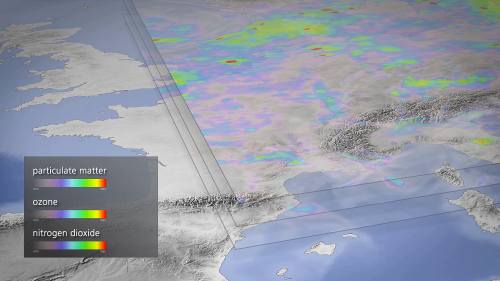Monitoring air quality takes next step

With air pollution linked to millions of deaths around the world, it has never been more important to monitor the air we breathe. Today marks a significant step forward as a deal is secured to build a crucial space sensor for tracking the world's air quality.
The €144 million contract for the Sentinel-5 instrument of Europe's Copernicus programme was formally signed today with Airbus Defence and Space in Ottobrunn, Germany.
"The Sentinel-5 instrument will be very important to continue the monitoring of our atmosphere by an operational system," noted Volker Liebig, ESA's Director of Earth Observation Programmes.
"Together with the launch of Sentinel-1A just days away, the ambitious Copernicus programme is now on the road to realising its full potential."
The Sentinel satellites are dedicated to providing data for Europe's Copernicus initiative – the first operational environmental observation system worldwide. Through Copernicus, data from all the Sentinel missions are freely available to users.
Delivering important data on the composition of the atmosphere, Sentinel-5 is set to make a step change in monitoring and forecasting global air quality.
This state-of-the-art instrument will be installed on the polar-orbiting MetOp Second Generation satellite. It will monitor the composition of Earth's atmosphere globally on a daily basis by measuring trace gases – such as ozone, sulphur dioxide, methane and carbon monoxide – and aerosols that affect air quality and climate.
The readings will help to both monitor and differentiate between natural and human-produced emissions, providing new insight into the human impact on air quality, ozone and climate.
It will also facilitate air-quality predictions, ranging from near-realtime, next-day air pollution forecasts to climate forecasts for the coming decades.
Measurements by Sentinel-5 will also complement data from MetOp Second Generation's thermal-infrared sounder and imagers.
As prime contractor for Sentinel-5, Airbus Defence and Space will lead the industrial consortium that will develop, construct and validate the mission's ultraviolet to shortwave-infrared spectrometer.
Provided by European Space Agency



















